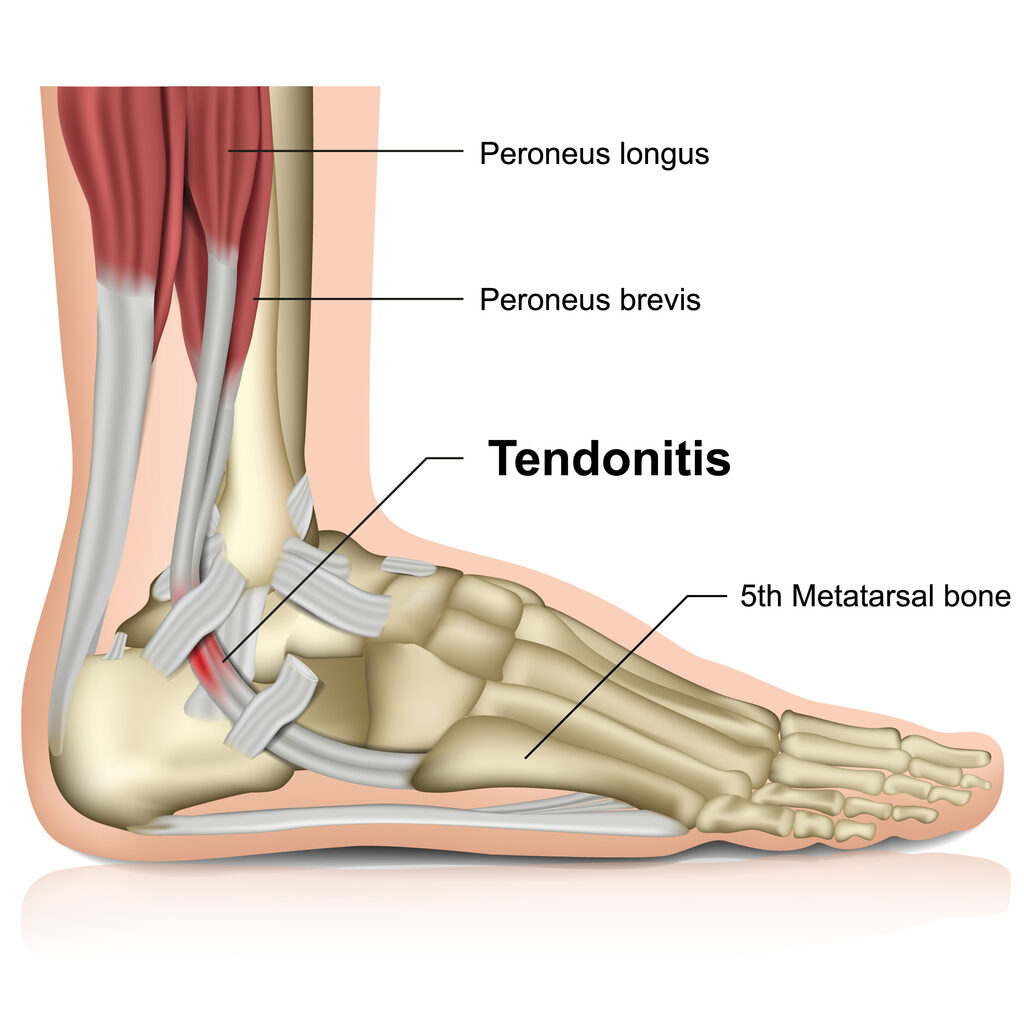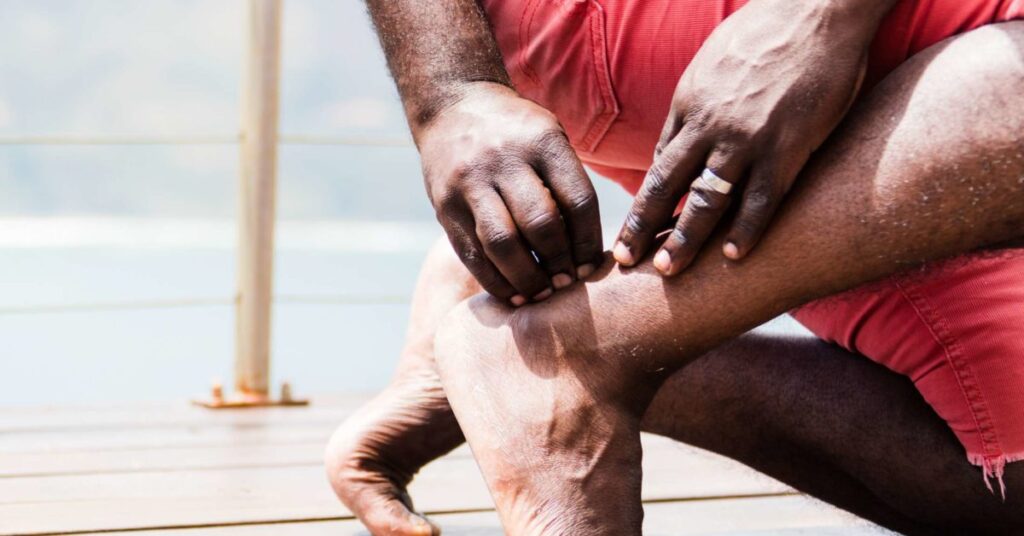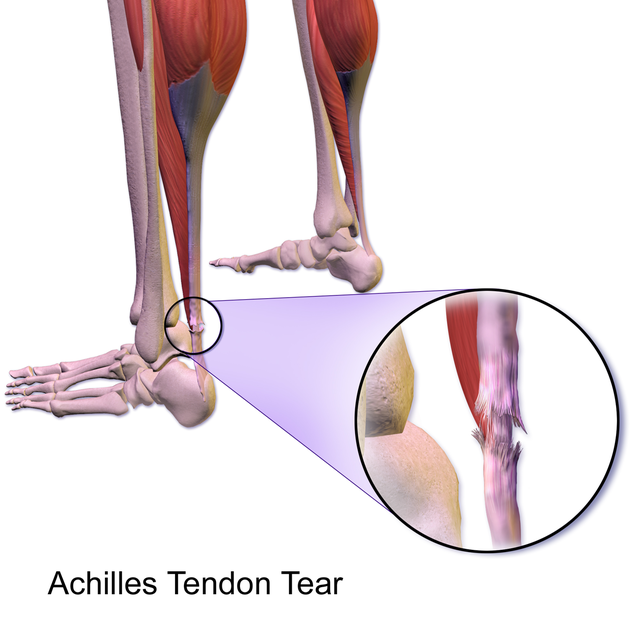If you have torn a tendon in your foot, you may be able to walk on it. However, the pain can be quite severe and you should only walk on it if you have no other option. There are several types of tendon injuries that can occur in the foot, but they all involve damage to one of the many tendons that connect muscles to bone.
The most common cause of tendon injury is overuse. This occurs when someone repeatedly performs an action with their feet or legs that places excessive strain on the tendons. This can happen during sports activities like running or cycling or even with daily chores such as carrying heavy loads.
In most cases, a torn tendon can heal on its own with rest and ice compression. If this does not work, surgery may be needed to reattach the tendon back together again. If surgery is necessary, there are certain factors that doctors consider before making a decision about whether or not surgical repair is needed:
Age: The older you are, the less likely your body will heal properly after surgery because it takes longer for tendons and ligaments to heal than other parts of the body like muscles and bones. Younger patients typically heal well after surgery compared to older ones who may take longer to recover from their injury
How do I know if I tore a tendon in my foot?
If you have pain, swelling, tenderness and bruising in your toes or foot, it could be due to a torn tendon. You may also notice that the affected toe or foot feels stiff or swollen.
Tears in tendons can occur from overuse, such as from running or playing sports. They can also be caused by sudden injuries like falling or twisting your ankle. If you have had a recent injury to your foot and are experiencing pain, see your doctor for an evaluation.
Treatment for tendon tears depends on the severity of the tear and the location of the tear within the tendon.
If your injury is mild, your doctor may recommend rest and ice packs over time to help reduce swelling and inflammation. This will help prevent further damage to the area while it heals. Your doctor may also suggest using crutches so that you don’t put any weight on your foot until it’s better.
If you’ve suffered a more severe injury, surgery may be necessary to repair the tear and restore strength back into your tendon so that it can resume normal function.
A tendon is a tough band of tissue that connects muscle to bone. The most common place for a tendon to tear is at its insertion into the bone (where it attaches).
Tendons in the foot can tear because of overuse, stress, or injury. Symptoms include pain, swelling and tenderness over the tendon. A tear may cause your foot to swell and feel stiff.
How do you fix a torn tendon in your foot?
Tendon injuries are common and are often due to overuse. For example, a runner may develop an Achilles tendon tear from overtraining or pushing too hard. A tear in the Achilles tendon is often called a “ruptured Achilles” and can be very painful.
Tendons are cords of tough, fibrous connective tissue that attach muscle to bone. They’re made up of protein fibers that are wrapped in bands of collagen, a flexible substance that allows tendons to stretch and recoil.
The most common place for a tendon injury is the knee, followed by the shoulder and ankle. The elbow and wrist can also be affected by tendon injuries.
There are three main types of tendons:
Hypertrophic — thickened by an increase in muscle size or volume; occurs when muscles swell because they’re being used too much or too soon after an injury has healed; these tears usually occur at the point where two muscles cross each other (the most common site of acute repetitive injuries)
Fibrotic — scarred from inflammation and degeneration; occurs when tendons have been overused for many years without rest or repair; often treated with steroid injections or surgery to remove damaged tissue
Tendon injuries are common, especially in athletes and active people. The most common tendon injury is a strain, which is an overstretching of the tendon. The tendon becomes inflamed, irritated, and painful. This can happen with any type of exercise that involves repetitive use of the same muscle or tendon group.
A tear of the Achilles tendon is often caused by sudden activity such as jumping or running. It can also be caused by an injury such as stepping on something sharp or twisting your ankle too much.
Can a torn foot tendon heal itself?

Foot tendon injuries can be tricky to heal. The good news is that most foot tendons will heal with time. But if you have an acute or chronic injury, it might take a long time, and the tendon may never recover completely.
Some of the most common causes of tendon problems include:
Overuse of the tendon — this can happen when you play sports or do manual labor with the same part of your body over and over again
Injury to the tendon — this includes any trauma that damages or injures your tendon, such as falling down and landing on your foot or ankle; stepping on something sharp; twisting your ankle; or having an accident at work
Sudden movement — sudden movements can injure tendons in two ways: by tearing them (like when you step on something sharp) or by stretching them too far (like when you fall down and land on your foot).
A torn foot tendon is a painful injury that can take some time to heal.
Torn foot tendons are caused by overuse or sudden trauma. The most common cause of a torn tendon in the foot is wearing high heels and walking on hard surfaces like concrete. People who run, jump and play sports may also develop torn tendons due to repetitive motions.
The most common foot tendons that are torn include:
Achilles tendon (the largest tendon in the body, located at the back of the heel)
Anterior tibialis tendon (located on the front of the lower leg)
Peroneus longus tendon (located on the outside of each ankle)
What happens if you don’t repair torn tendons?
Injury to a tendon is a very serious problem. When you tear a tendon, the body’s natural healing process fails to repair it properly. In the case of a major injury such as a torn Achilles tendon, the result is often chronic pain, instability and loss of mobility.
If you have a torn tendon, your doctor will likely recommend surgery to repair it. This procedure involves taking healthy tissue from somewhere else in your body — often from another part of the Achilles tendon — and grafting it into the tear area.
Surgery is usually successful at repairing torn tendons, especially if they’re not very large tears. But even after surgery there may be some residual weakness in the repaired area that can cause problems later on.
If you don’t repair a torn tendon, it can lead to serious problems. Without treatment, the tendon will heal abnormally, leaving scar tissue that doesn’t function as well as normal tendon tissue. This results in pain and stiffness in the joint next to the damaged tendon when you use it. Over time, you may also lose range of motion in that joint.
If your torn tendon doesn’t heal completely after several months, your doctor may recommend surgery to remove the scar tissue and replace it with healthy tissue from another part of your body (autograft). If there’s no suitable donor site for an autograft, doctors may use synthetic materials or other techniques to help reattach the torn ends of the tendon together.If your tendon tears completely through the muscle, it’s called a complete rupture. Complete ruptures heal very slowly because there’s no blood supply to the tendons. Without blood flow, healing takes longer than normal tissue regeneration.
How do you tell if a tendon is torn?
If you’re a runner or a cyclist, or if you’ve had an injury that involves jumping or playing sports, it’s possible that you’ve torn a tendon. Tendon injuries can be very painful and disabling, but they are also common injuries that usually take time to heal.
When your body suffers an injury, the affected area may swell up and become discolored. The skin may feel warm and tender to the touch, and sometimes itchy or painful. It’s important not to ignore these symptoms because ignoring them can lead to permanent damage in the affected area.
How Do You Tell If A Tendon Is Torn?
There are several ways that doctors can check if a tendon is torn:
MRI scans: MRI scans use magnetic fields to create detailed images of the muscles, tendons and bones in your body. These scans allow doctors to see whether there are any tears in your tendons so they can determine whether surgery is needed.
Ultrasound imaging: Ultrasound uses sound waves to create an image of your tendons, ligaments and joints without using x-rays like CT scans do. Ultrasounds give doctors an idea of what kind of treatment options are available for your injury before they decide which one is best forThe most common areas that a tendon can be torn are the elbow and knee. The pain of a torn tendon is usually severe and often associated with swelling, bruising, and difficulty moving the joint. It is important to have your symptoms evaluated by an orthopedic surgeon for proper diagnosis and treatment.
How long does it take a torn tendon in your foot to heal?

A torn tendon in your foot can take months to heal.
Tendons are the tough tissue that connects muscle to bone. They serve as anchors for muscles, holding them in place and allowing them to pull on bones so we can move our bodies. Tendon injuries range from minor tears to complete ruptures, which are often treated with surgery.
Tendon injuries are common among athletes, especially those involved in high-impact sports like basketball, soccer, football and gymnastics. Even though they’re often caused by a single traumatic event, they can also develop over time from repetitive motion or strain on the tendon.
A torn tendons connect muscle to bone and serve as anchors for muscles, holding them in place and allowing them to pull on bones so we can move our bodies
The answer depends on the type of tendon involved, the severity of the tear and whether you have other injuries.
The most common foot tendon injury is a ruptured Achilles tendon. The Achilles tendon connects your calf muscles to your heel bone and helps you stand on your toes. It’s important for jumping and kicking, but it also helps you walk.
To treat a torn Achilles, doctors typically recommend surgery to repair or reattach the tendon. Recovery takes at least six months, but some people need physical therapy for up to two years after surgery before they can return to normal activities.
Other types of foot tendons may also be torn by trauma or overuse, but these injuries are less common than Achilles tendinopathy.
How long does it take for a torn tendon to heal without surgery?
It takes time for the ligaments to heal, but the tendons can take much longer. The nerves of the hand are very sensitive, and sometimes there is a great deal of pain.
It is difficult to give a specific time frame for healing without surgery. For example, one person might have a torn tendon and be back to normal activities within a few months, while another person might take years.
It depends on how long it takes for your body to heal from the injury, as well as how well you take care of yourself during recovery.
The healing process for torn tendons depends on how old the patient is and how serious the injury is.
Torn tendons can take anywhere from two to 12 weeks to heal, depending on how bad the injury is. The more severe your injury, the longer it will take for your tendon to heal.
Injuries such as a tear in a muscle or ligament are treated with rest and physical therapy. If your injury is more severe, you may need surgery to repair it.
It depends on the type of tear, but you may have to wait several months before you can return to your normal activities.
The average time for recovery from a torn tendon is 8-12 weeks, but it can take up to a year or more depending on the type of tear and other factors.
The most common types of torn tendons are:
Injury to the Achilles tendon (which connects calf muscles to the heel bone)
Injury to the wrist extensor tendons (which connect forearm muscles to finger joints)
Other common types include:
Wrist flexor tendons (connecting forearm muscles with fingers)
Thoracic spine rotator cuff tendons (connecting shoulder blade muscles with collarbone)
How long does a tendon take to heal in the foot?
A tendon is a tough, fibrous band of tissue that connects muscle to bone. Tendons transfer the force generated by muscles to bones and help stabilize joints.
The foot’s main tendon is the Achilles tendon, which runs from the calf muscle to the heel bone (calcaneus). The Achilles tendon helps you flex your foot up and down while running or walking. It also helps you balance on one leg.
If you tear or rupture your Achilles tendon, it can take several months for it to heal completely. There are three phases of healing:
Inflammatory phase: This begins immediately after an injury and lasts about two weeks. During this time, blood vessels in the affected area swell with inflammation and release chemicals that promote healing. These chemicals help prevent infection in the injured area while new cells grow to repair damaged tissues.
Reparative phase: This stage lasts from two weeks to six months after an injury and involves rebuilding damaged tissue with new cells produced by specialized stem cells in your body called myoblasts. Myoblasts are embryonic cells found in muscles that develop into mature muscle fibers during childhood and adolescence but don’t continue growing after age 20 or so — except for during pregnancy when they help deliver babies!
How long does torn tendon take to heal?

Torn tendon recovery time varies depending on the severity of the tear, which can range from a small partial tear to a complete rupture. It can take weeks or months to heal completely.
The timing of your torn tendon recovery will depend on your age and overall health. Older adults tend to heal more slowly than younger people do.
In most cases, you’ll need surgery if your torn tendon is severe enough to cause pain or instability. Many people can continue their normal activities during their recovery.
Talk to your doctor about what you should expect during your recovery and when you can return to work and exercise.
